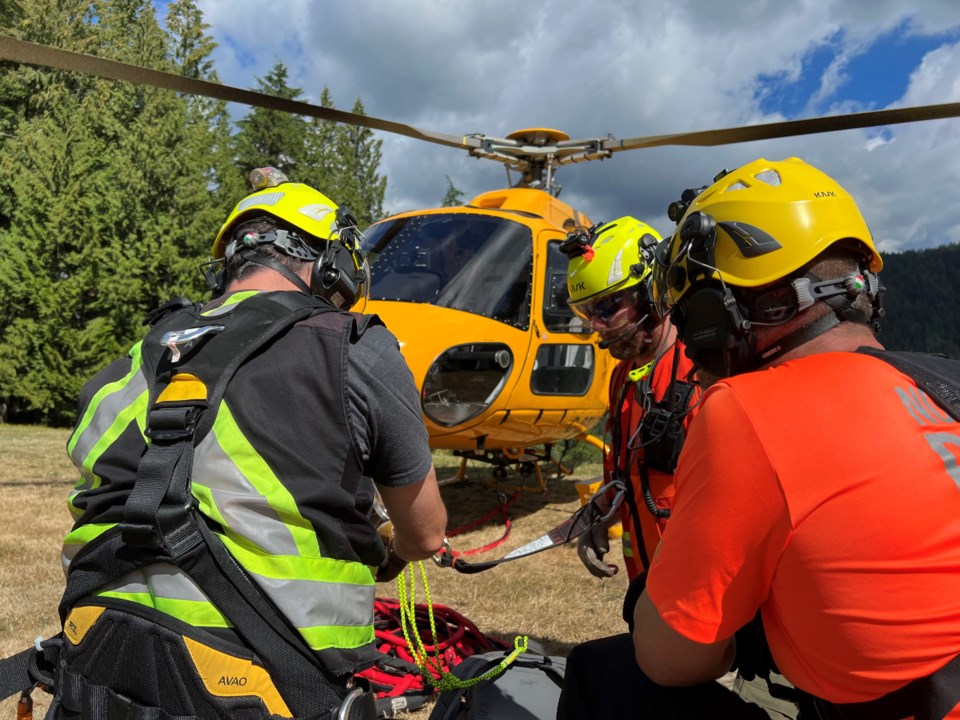North Shore Rescue ended its summer season with three back-to-back rescue calls in the span of less than three hours on Labour Day.
The first call came from District of North Vancouver firefighters who were helping a 48-year-old woman with an ankle injury on Mount Seymour’s Dog Mountain. Members of the local rescue team were helicoptered to the site near the lookout to assist, said David Barnett, search manager with North Shore Rescue.
While the team was still on the mountain, the rescue team received a second call, for a more serious accident. A 61-year-old woman had fallen about 10 metres down a steep rock face on Dog Mountain, said Barnett. “The trail was very, very slippery after the rain [on Sunday],” said Barnett. “It’s easy to slip and fall.”
Barnett said the woman had wrist and facial injuries and – most concerning – was showing signs of confusion and possible concussion.
The rescue team helicoptered the first injured hiker out by long line to North Shore Rescue’s Bone Creek station, then flew back to pick up the second hiker, who was also flown off the mountain by long line – this time on a specialized stretcher. That hiker was taken to Inter River Park where a waiting ambulance transported her to hospital.
When those rescues had been completed, the team received one final call – for another hiker who had slipped on the trail and was being assisted by District of North Vancouver firefighters. In that case, rescuers were able to assist the hiker to walk out under their own steam.
Barnett warned hikers heading out for a late summer hike that wearing proper hiking boots is important. “Footwear is a factor in many injuries,” he said.
He also warned members of the public on the trail that “when they see a helicopter coming in for a landing or a hover,” they should clear well away from the area. “The best thing they can do is get right into the trees,” he said.



